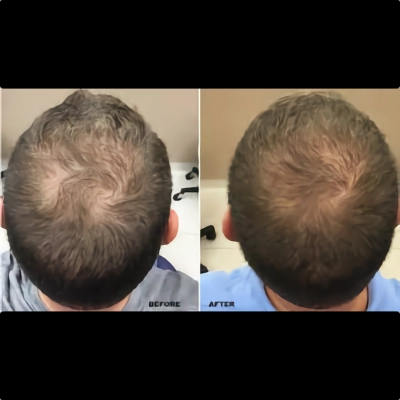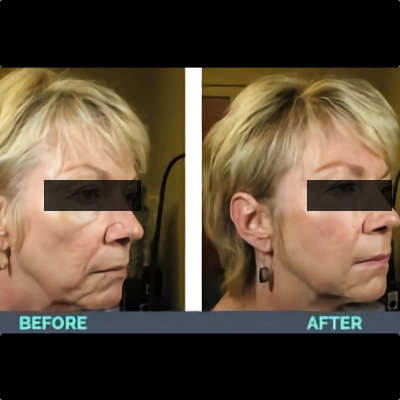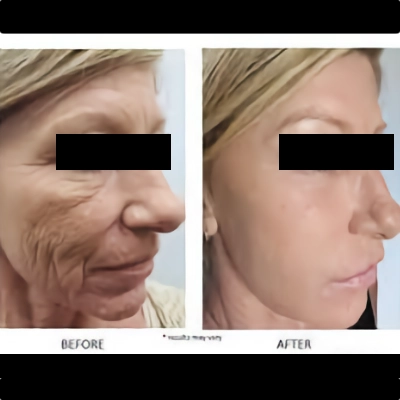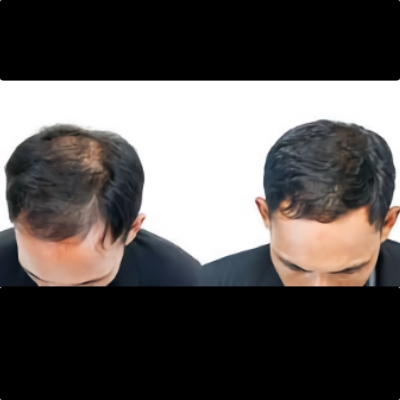
PRP FOR HAIR LOSS TREATMENT
The SELPHYL® System
At Sandia Skin + Face, we used Next Generation PRP – Platelet-rich Fibrin Matrix (PRFM) from SELPHYL®.
They designed the SELPHYL® System for the safe and rapid preparation of Platelet-rich Fibrin Matrix (PRFM) from a small blood sample at the patient’s point of care. Many PRP systems require operator skills, have varying results, and have extensive contamination of red blood cells and white blood cells. SELPHYL® removes virtually all contaminating cells and is independent of the operator technique. They converted PRP to PRFM through a controlled process, creating a scaffold that protects and preserves platelets.
The SELPHYL® System is a completely closed system and can convert PRP to PRFM with the addition of a precise amount of calcium chloride, which starts the conversion of fibrinogen to fibrin as part of the clotting cascade. The fibrin matrix serves as a three-dimensional scaffold to maintain the platelets at the site of injection. The scaffold also serves to protect the platelets to sustain their release of growth factors over a longer time.
They designed the SELPHYL® System for the safe and rapid preparation of Platelet-rich Fibrin Matrix (PRFM) from a small sample of blood at the patient point of care. Many PRP systems require operator skill, have varying results, and have extensive contamination of red blood cells and white blood cells. SELPHYL® removes virtually all contaminating cells and is independent of operator technique. They convert PRP to PRFM through a controlled process, creating a scaffold that serves to protect and preserve platelets.
Think of SELPHYL® PRFM as the next generation PRP.
Watch Dr. Richard Goldfarb, MD, demonstrate SELPHYL® PRFM’s Ease-of-Use!
WHAT ARE PRP FOR HAIR LOSS TREATMENTS?
PRP INJECTIONS (PLATELET-RICH PLASMA), also known as “autologous conditioned plasma.”PRP INJECTIONS (PLATELET-RICH PLASMA) is a concentrate of platelet-rich plasma protein derived from whole blood, centrifuged to remove red blood cells.
Professionals use PRP for various tissue engineering applications in bone, cartilage, skin, and soft tissue repair. We have reviewed PRP to serve as a source for the “delivery of growth factors and/or cells within tissue-engineered constructs, often in combination with biomaterials.”
There are four general categories of preparation of PRP based on its leukocyte and fibrin content: leukocyte-rich PRP (L-PRP), leukocyte reduced PRP (P-PRP; leukocyte reduced or pure PRP), leukocyte platelet-rich fibrin, and pure platelet-rich fibrin.
The Power of Platelets
Platelets and other components in human blood migrate to a site of injury. We know platelets to release various growth factors that respond to tissue injury, initiating and promoting healing. By concentrating platelets at the site of injury, physicians have the potential to enhance the body’s natural capacity for healing.
WHAT AREPRP INJECTIONS (PLATELET-RICH PLASMA)?
PRP, by definition, refers to platelets in plasma, where the platelet concentration is twice the normal concentration in whole blood. Nowhere in the definition of PRP is there a description for including red blood cells (RBC) or white blood cells (WBC).We should remove these cells as much as possible from a PRP preparation.
Some kits that tout high platelet concentrations do so at the expense of having contaminating RBCs or WBCs—they know these cells to have inflammatory and catabolic effects—just the opposite of the desired result. If the PRP in the syringe has any tinge of pink or red, you are most likely injecting a preparation with RBC contamination.
PRP vs. PRFM
PRP

PRFM

SANDIA SKIN + FACE
PRP FOR HAIR LOSS TREATMENT
Platelet-rich plasma (PRP) therapy uses injections of a concentration of a patient’s own platelets to speed up the healing of injured tendons, ligaments, muscles, and joints. In this way, PRP injections use each patient’s own healing system to improve musculoskeletal problems.
First, the doctor draws blood from the patient’s arm and then separates the PRP from the rest of the blood’s components.
After injecting lidocaine to numb the treatment area, the doctor carefully injects the PRP into multiple places under the skin. The platelets break down and release their growth factors, which trigger the natural processes of cell proliferation and tissue renewal.
The procedure itself takes about 30 minutes, and most people can resume their normal activities immediately afterward.
See our FAQ below. Contact Us with questions.
PRP FOR HAIR LOSS TREATMENT
BEFORE-AFTER IMAGES
PRP FOR HAIR LOSS TREATMENT
FAQ
PATIENT TESTIMONIALS
PRP FOR HAIR LOSS TREATMENT
PROCEDURE PREP
Before your PRP Injections (Platelet-Rich Plasma) treatment session, our physician will discuss what to expect during your treatment. However, it is helpful to remember that there are a few things to take into consideration before your session:
PRP FOR HAIR LOSS TREATMENT
AFTERCARE
After your treatment session, we recommend that all patients rest on the day of their procedure. We advise limited use of the treatment area for the next two days, but the movement is encouraged. Limited use helps the joint recover as the treatment is absorbed by the area’s surrounding tissues.
0 – 3 days post-procedure guidelines
Therefore, discontinue use of any of these medications post-procedure for best results:
3 – 14 days post-procedure guidelines
3 – 4 weeks post-procedure guidelines
RECENT ARTICLES
5 PROVEN CHEEK FILLER TREATMENTS FOR A YOUNGER-LOOKING YOU
BUNNY LINES – 5 PROVEN TREATMENTS
UNVEILING YOUR OPTIONS FOR LASER VEIN REMOVAL
SCHEDULE APPOINTMENT
Registered Nurse Practitioner Tonya Tuggle is Albuquerque’s choice for those who want to keep their youthful appearance and healthy glow. Tonya is passionate about educating patients on preventative skin care and providing non-surgical maintenance for graceful aging. We can’t wait to meet you!










